SPANISH GRAPE VARIETIES

RED GRAPE VARIETIES
Those with a full star ( ) may be considered the most important.
) may be considered the most important.
 ) may be considered the most important.
) may be considered the most important.
SPANISH GRAPE VARIETIES |
 |
|
RED GRAPE VARIETIES |
||
|
Those with a full star (
 ) may be considered the most important. ) may be considered the most important. |
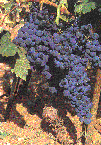 |
TEMPRANILLO
|
GRACIANO
|
|
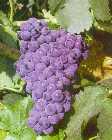 |
GARNACHA
TINTA
|
CARIÑENAA variety that produces robust,
well-balanced wines. Cariñena is grown most importantly in
Rioja, where it is known as Mazuelo. It is the
grape which adds colour and body to the Rioja 'mix', and is
used in most traditionally-made Rioja wines to counterbalance the
lightness of Garnacha.
Strangely enough it plays only a small part in the DO wine of its
native region of Cariñena in
Aragón.
|
|
JUAN
GARCÍA
|
BOBALA grape with good colouring
properties, Bobal yields good, beefy rosado wines
and warm reds. Found mainly in the Levant (south-east) area of Spain.
|
||
MENCÍA
|
GARNACHA TINTORERAAlso called Alicante.
One of the few grapes that has coloured juice, it is used in blends to
provide colour and weight (particularly with Mencía in Bierzo),
but so far it does not appear in any wines of quality.
|
||
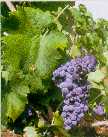 |
MONASTRELL
|
MORISTEL |
PINOT NOIR |
SYRAH/SHIRAZThis is a recent addition to
Spanish wines, and is mainly used in the Priorato area.
|
||
MERLOT |
CABERNET SAUVIGNONThis is one of the main French
grapes and it has settled very well into the soil of Spain, although it
does need a great deal of water.
|
||
CABERNET FRANCThis grape is not very common in
Spain, but is sometimes used in conjunction with Cabernet Sauvignon. It
is mainly prevalent in the Penedès and Pla de Bages
regions of Catalonia.
|
 |
ALBARIÑO
|
AIRÉN
|
|
 |
VERDEJO
|
MOSCATEL
|
|
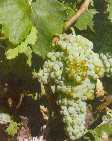 |
MACABEO
|
PALOMINO
|
|
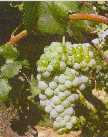 |
PARELLADA
|
PEDRO
XIMÉNEZ
|
|
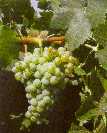 |
XAREL.LO
|
LOUREIRA
|
|
GODELLO
|
MALVASÍAOriginally from Greece, this
grape variety produces highly aromatic and individualistic
wines. It is found especially in Valencia, Zamora and the Canary
Islands, where it still produces a sweet, semi-fortified wine which
used to be known as Canary sack.
|
||
MERSEGUERAA grape planted in
Valencia, Merseguera is the white-wine mainstay of the
Levant. Its main role is in the production of the everyday white wines
that are destined for the supermarkets of Europe.
|
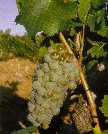 |
CHARDONNAYOriginally from France this
grape is now grown all over the world. Its main aromas are peach and
melon, with a touch of honey.
|
GEWÜRZTRAMINERAlsace is the well-known region
of Gewürztraminer, although it is also grown in Germany. In
Spain it is mainly grown in
Penedès and Somontano
; it performs best in these cooler climates, so it can retain the
little acidity that it does have. It has a distinctive bouquet of
lychees and spice, and, although dry wines are the norm, many seem so
rich, they give the impression of sweetness.
|
|
SAUVIGNON BLANCThis French grape variety has
adapted very well to the dry climate of Rueda. It has a piercing aroma of
cut grass, nettles and gooseberries.
|